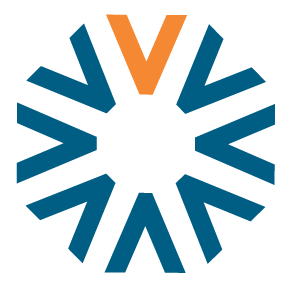Blog
Top 20 Healthcare Staffing Statistics to Optimize Workforce Management
Tuesday November 19, 2024
Effective workforce management is essential for healthcare organizations to maintain quality patient care while balancing costs and employee well-being. With the growing demand for healthcare services and an aging workforce, optimizing staffing processes is more important than ever. Here are 20 critical healthcare staffing statistics that provide insights to improve workforce management strategies.
The Growing Demand for Healthcare Services
The demand for healthcare services is at an all-time high, driven by demographic shifts and increasing patient needs. These trends emphasize the urgency of preparing for staffing challenges.
1. Aging Population Impact: By 2030, all baby boomers will be aged 65 or older, contributing to a 30% increase in healthcare demand.
2. Healthcare Job Growth: The healthcare industry is projected to grow by 13% between 2021 and 2031, adding over 2 million new jobs.
3. Shortage of Nurses: The U.S. is expected to face a shortage of 1.2 million registered nurses by 2030.
4. Global Healthcare Shortfall: WHO estimates a shortfalls of 10 million healthcare workers by 2030.
Nursing Staff: A Critical Resource
Nurses form the backbone of healthcare delivery, but challenges like burnout, turnover, and aging workforce demographics threaten their stability.
5. Burnout Rates: Over 31% of nurses report burnout, a major factor in high turnover rates.
6. Vacancy Rate: As of 2024, 48% of hospitals reported a vacancy higher than 10%.
7. RN TurnOver Cost – According to the NSI Survey the cost average cost of a Bedside Registered Nurse is $56,300, a 7.5% increase, resulting in the average hospital losing between $3.9m – $5.8m
8. Workforce Age: The Median age of RNs is 46 years. More than one-quarter of registered nurses report that they plan to leave nursing or retire over the next five years.
9. Demand for Advanced Practice Nurses: Employment of nurse practitioners is expected to grow by 45% by 2031, significantly faster than the average for all occupations.
10. Overtime: 83.4% of nurses reported working overtime because they did not want to let down their colleagues
The Cost of Inefficient Staffing
Inefficient staffing processes result in wasted time, excessive costs, and diminished quality of care.
11. Financial Burden: Healthcare staffing shortages cost the U.S. over $16 billion annually in temporary staffing and turnover costs.
12. Shift Coverage Challenges: 40% of healthcare managers report filling shifts at least 3 hours per week due to absences.
13. Agency Staffing Costs: The use of agency nurses costs 30%-50% more than directly employed staff.
Shift Management & Technology Adoption
Technology is reshaping healthcare workforce management, offering tools that reduce inefficiencies and improve staff satisfaction.
14. Shift Swapping Inefficiencies: 65% of nurses report difficulty swapping shifts due to manual scheduling processes.
15. Technology Impacts: Centralized scheduling can improve nurses’ satisfaction by 34% and reduce costs by 1% while allowing mobilization of nurses to busy locations and avoid overtime costs
16. Cost Savings: Facilities that implement scheduling software report an average 12% reduction in staffing costs.
17. Adoption – Organizations report an 88% increase in shift coverage after adopting employee scheduling software.
Patient Care and Outcomes
Staffing inefficiencies have a direct impact on patient outcomes, highlighting the need for optimal workforce management.
18. Patient-to-Nurse Ratio: For every additional patient added to a nurse’s workload, the risk of mortality increases by 7%.
19. Impact on Readmissions: Hospitals with higher nurse staffing had 25 percent lower odds of being penalized under HRRP compared to otherwise similar hospitals with lower staffing.
20. Staffing and Patient Satisfaction: Improved nurse-to-patient ratios, attaining employee satisfaction scores above 70%, and increasing patient satisfaction scores to over 85%.
The Case for Investing in Automated Shift-Filling Solutions
These statistics paint a clear picture: healthcare organizations must modernize their workforce management processes to meet increasing demands, reduce costs, and improve outcomes. Here’s how solutions like Vocantas can make a difference:
Reduce Administrative Burden: Automated systems free managers from hours of manual scheduling, allowing them to focus on strategic priorities.
Improve Employee Satisfaction: By streamlining shift bidding and minimizing overtime, automated tools enhance work-life balance, reducing turnover and associated costs.
Enhance Operational Efficiency: Real-time shift-filling capabilities ensure vacancies are promptly covered, reducing reliance on costly agency staff and minimizing disruptions.
Boost Patient Outcomes: With optimized nurse-to-patient ratios, healthcare organizations can improve care quality, reduce mortality risks, and enhance patient satisfaction.
Achieve Financial Savings: Investing in scheduling technology delivers measurable ROI from lower turnover costs to reduced reliance on temporary staff.
Conclusion
The statistics are clear: inefficiencies in healthcare staffing processes are costly—not only in financial terms but also in their impact on patient outcomes and employee well-being. With growing healthcare demand and staffing shortages, now is the time to invest in innovative solutions like Vocantas’ automated shift-filling tools. These systems empower organizations to meet the challenges of modern healthcare, ensuring efficient, cost-effective, and patient-centered care delivery. By addressing these issues proactively, healthcare providers can secure a sustainable future while delivering exceptional care.
Stay Connected!
Subscribe to our newsletter and receive all our news and updates.
Blog
Check out our
latest Blog Posts
Cutting-edge technologies, industry trends and best
practices workforce management.

Wednesday January 29, 2025
Optimizing Workforce Efficiency with Integrated Manufacturing Scheduling Software
The manufacturing industry operates on precision and efficiency. From raw material sourcing to final product assembly, every second counts. Yet,….

Wednesday January 15, 2025
Top 5 Nursing Home Software Solutions to Invest in for Efficient Operations
As staffing shortages and external factors continue to impact the healthcare industry, nursing homes face increasing pressure to provide high-quality….

Thursday December 19, 2024
Absence Management Guide: Tools to Maximize Workplace Efficiency
Managing employee absences effectively is a cornerstone of organizational success. A well-implemented absence management system not only ensures accurate payroll….




